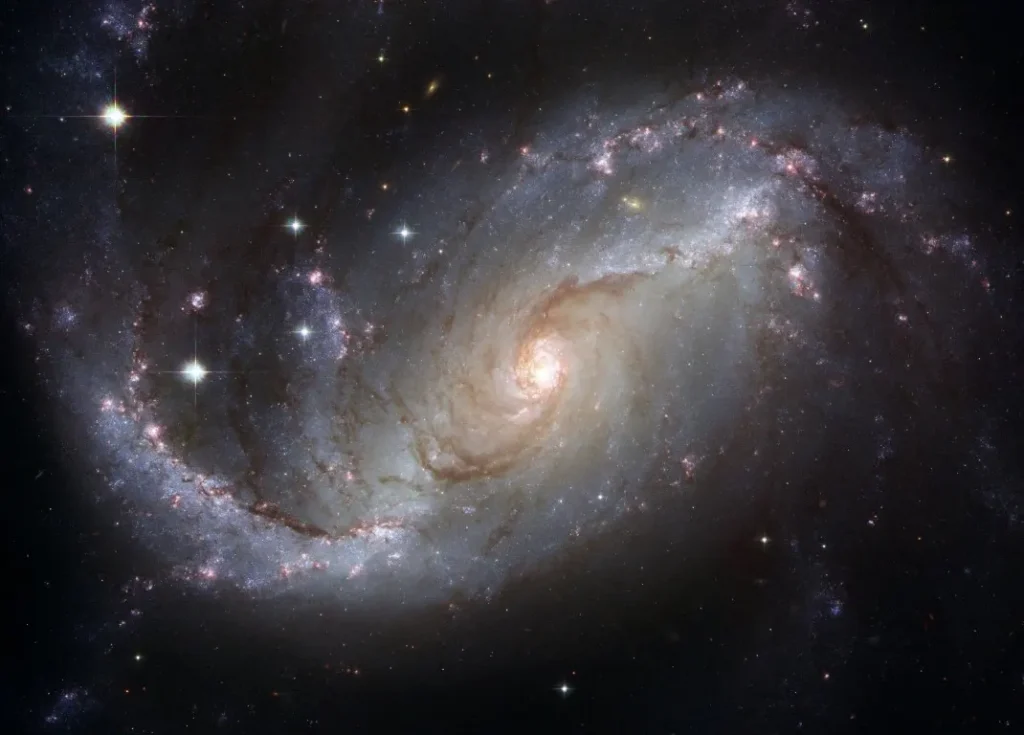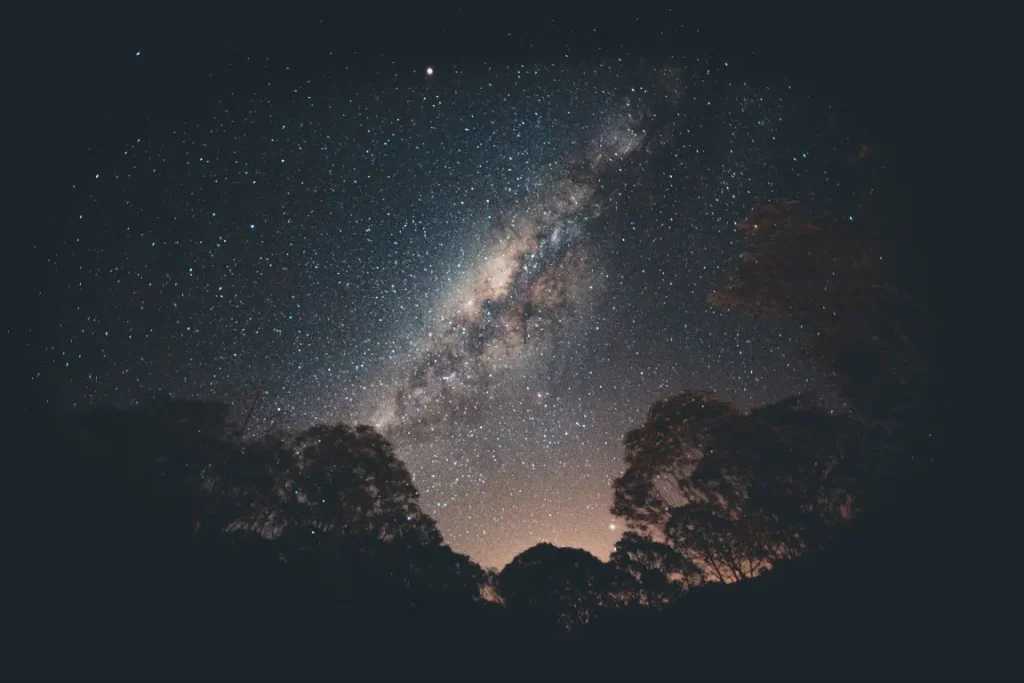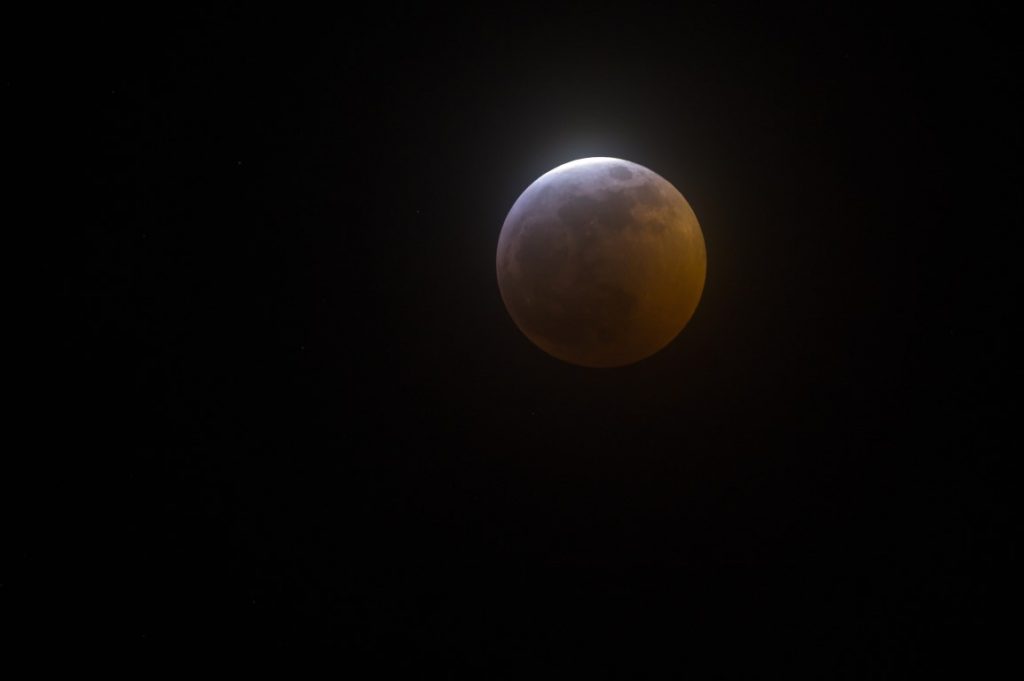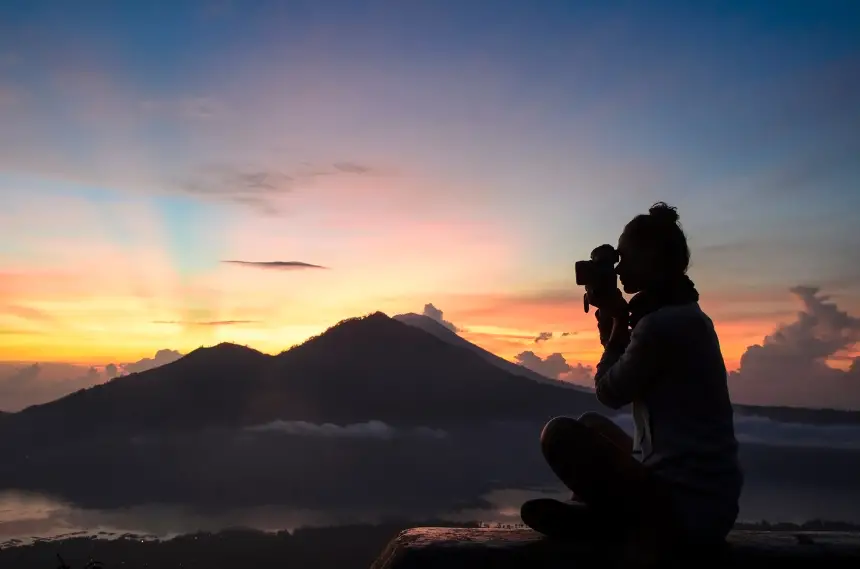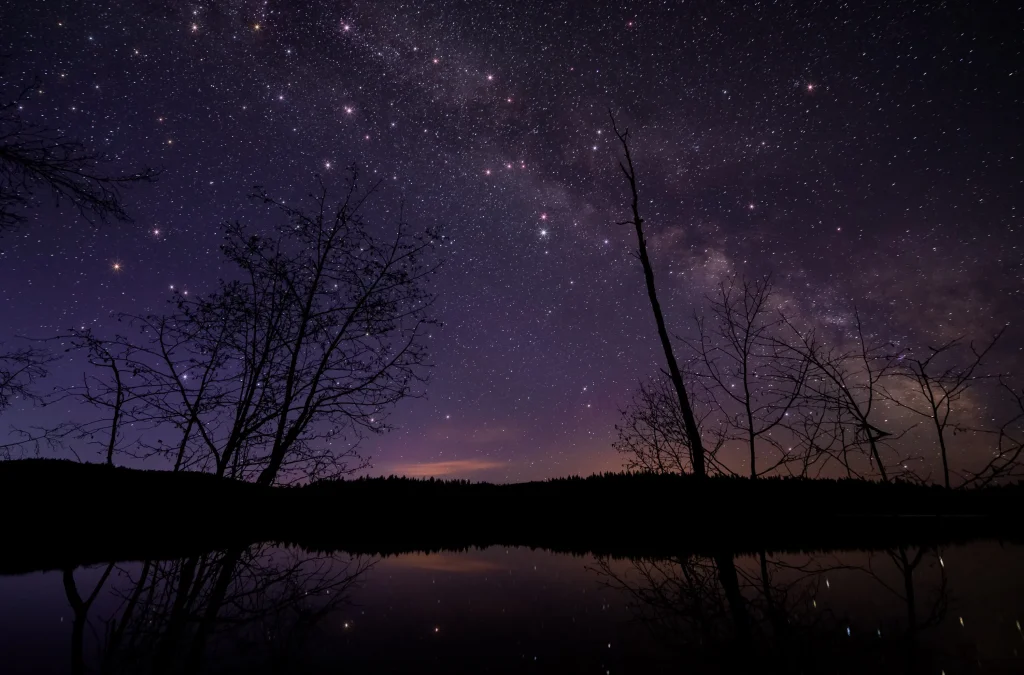
Astrophotography in July 2023 promises a host of celestial events that will offer stunning photographic opportunities.
From capturing the luminous Milky Way as it dominates the northern hemisphere’s night sky, to the ‘Super Buck Moon’ making its majestic ascent, this month is packed with noteworthy occurrences.
Other highlights include the remarkable ‘Manhattanhenge’ in New York City and the dazzling brightness of Venus.
The month also offers perfect conditions for close-up astrophotography with the Last Quarter Moon leaving the night sky free of moonlight.
For photography enthusiasts and stargazers alike, July 2023 is set to be a captivating month.
Best Astrophotography Targets on July
- 1st of July – The conjunction of Venus and Mars
- 2nd and 3rd of July – the full ‘Super Buck Moon’
- 7th of July – The conjunction of the Moon and Saturn
- 10th July: July’s dark sky window opens
- 12th and 13th July – Manhattanhenge at Sunset.
- 17th July – New Moon
- 29th and 30th July – The Delta Aquarids Meteor Shower
1st of July – The conjunction of Venus and Mars
The conjunction of Venus and Mars on July 1 is a spectacular start to the month. This event, where Venus and Mars will pass within 3 1/2 degrees of each other, will be visible in the constellation Leo.
Occurring in the early morning at 2:48 AM (06:48 UTC), it presents an exquisite opportunity for astrophotography. The proximity of these two bright planets, visible to the naked eye, will create a stunning celestial tableau.
Photographers might aim to capture this conjunction just before dawn, when the ambient light adds a soft glow to the scene without overpowering the planets’ brilliance.
Whether you’re an experienced astrophotographer or a beginner, this event is certainly one to mark on your calendar.
2nd and 3rd of July – the full ‘Super Buck Moon’
On July 2-3, the full ‘Super Buck Moon’ will be visible. This moon will be the lowest full moon of the year and the first of four supermoons. Check the local moonrise time on your premise and ready to grab more experience with the full ‘Super Buck Moon’.
It will rise at its most southeasterly point of the year, which may offer some unique photographic opportunities as it appears on the horizon next to interesting foreground objects.
By the way, you can refer my previous article on how do I take sharp moon photos for enhancing your moon shooting.
7th of July – The conjunction of the Moon and Saturn
The conjunction of the Moon and Saturn on July 7th is another awe-inspiring celestial event for astrophotographers.
With Saturn passing just 2.4º north of the Moon at 03:09 UTC, the proximity of these celestial bodies will create a striking visual contrast.
The Moon, at a magnitude of -12.5, will be brightly illuminated at 81.4% of its full phase, while Saturn, with a magnitude of 0.6, will present a more subdued but equally fascinating sight.
This conjunction offers an excellent opportunity to capture the beauty of our solar system in a single frame.
Photographers might consider using a telescope to capture the ringed beauty of Saturn next to the radiant Moon, creating an image that beautifully showcases the vastness and diversity of the cosmos.
10th of July: July’s dark sky window opens
The opening of July’s dark sky window on the 10th is a significant occasion for astrophotographers. The Last Quarter Moon, half-lit and rising after midnight, paves the way for unobstructed stargazing and astrophotography.
With the moonlight’s reduced presence, the stunning vista of the Milky Way can be captured in all its glory.
The waning crescent moon, though still slightly illuminating the sky, creates an appealing balance between the celestial and earthly elements of the composition. It provides a subtle touch of light to the foreground, bringing out the details without overpowering the stars’ brilliance.
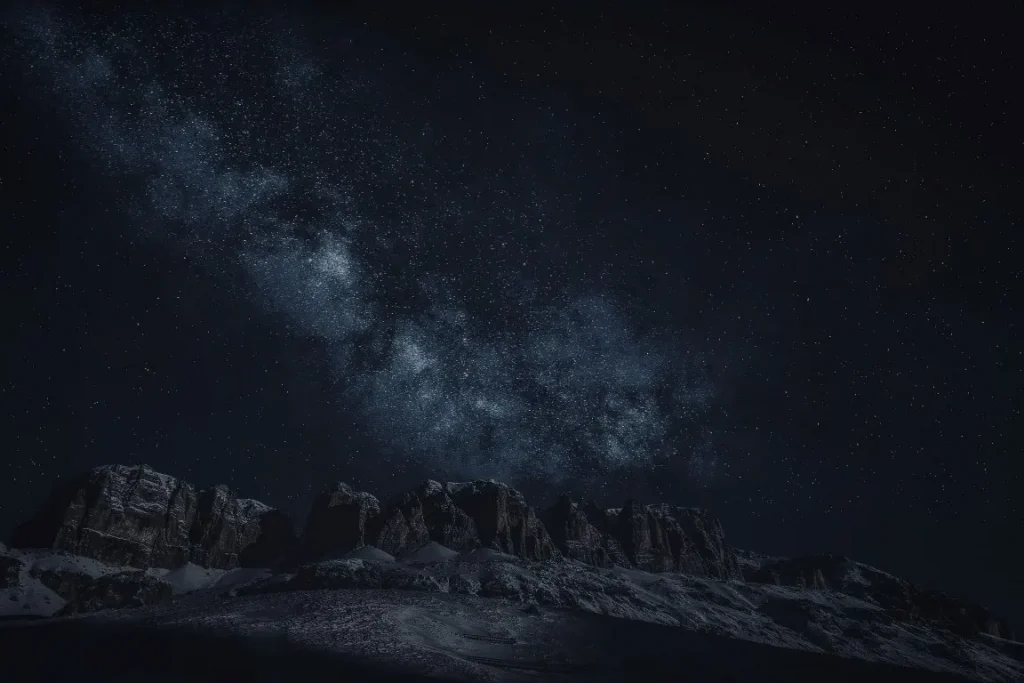
During this time, landscape astrophotographers can take advantage of the dark sky conditions to capture breathtaking images of the night sky and its myriad of stars.
You can take more idea about landscape astrophotography using this article that was written previously.
The waning crescent moon in the southeastern sky shortly before dawn can add a celestial charm to the earthly landscapes.
This event is a reminder to always check a moon phase calculator when planning any landscape astrophotography trip.
The moon’s phase and position can significantly impact the quality and aesthetics of the night sky images.
12th and 13th of July – Manhattanhenge at Sunset.
The second ‘Manhattanhenge’ of 2023, occurring on July 12 and 13, is an enchanting urban astronomical event unique to the bustling streets of New York City.
As the sun sets, it aligns perfectly with Manhattan’s east-west oriented streets, bathing the city in a radiant, golden light. This phenomenon provides a fleeting moment of tranquility amidst the city’s perpetual motion, creating a stark contrast between the natural and the urban.
For photographers, this is a golden opportunity to capture the city in an extraordinary light, as skyscrapers form a dramatic silhouette against the fiery sunset.
Whether shot from a distance to include the panoramic cityscape, or up close to encapsulate the intricate play of light and shadow on the buildings, these photographs can be a stunning testament to the harmonious convergence of the cosmic and the constructed.
17th of July – New Moon
The New Moon on July 17th is an exceptional occasion for astrophotographers, particularly those interested in deep sky objects.
Occurring at 18:33 UTC, the moon will be positioned on the same side of the Earth as the Sun and will not be visible in the night sky. This absence of moonlight creates the darkest skies of the month, offering an unparalleled opportunity to photograph faint celestial objects like galaxies and star clusters.
The darkness of a New Moon night allows the magnificent details of the universe to come forward. The spirals of distant galaxies, the dense clusters of stars, and the nebulous clouds of interstellar matter can all be captured with greater clarity. Photogr
aphers can utilize long-exposure techniques to collect enough light to reveal these elusive objects.
This event is a reminder of the majesty and wonder of the universe that often remains hidden due to the brightness of urban areas and the moon. For photographers, it’s a chance to delve deeper into the cosmos, capturing images that resonate with the profound beauty and mystery of the universe.
29th and 30th of July – The Delta Aquarids Meteor Shower
The Delta Aquarids Meteor Shower, peaking on the nights of July 29 and 30, is a delightful mid-summer event for stargazers and astrophotographers alike.
The shower, resulting from the debris left by comets Marsden and Kracht, can produce up to 20 meteors per hour, creating a mesmerizing spectacle of fleeting, fiery streaks across the night sky.
However, the nearly full moon during this time may veil some of the fainter meteors, turning this event into a game of patience and observation. Yet, the possibility of capturing a swift, bright meteor in a photograph could make the wait worthwhile.
The challenge for photographers is to balance the moonlight with the faint streaks of the meteors. Long exposures can help capture more meteors, but also risk overexposing due to the moonlight.
Viewing from a dark location after midnight will provide the best chances for seeing and photographing this celestial event.
Although the meteors will radiate from the constellation Aquarius, they can appear anywhere in the sky, encouraging photographers to explore different angles and compositions.
Despite the presence of the moon, this event is a beautiful reminder of our solar system’s dynamic nature and the hidden wonders that the night sky holds.
Actually, the meteor shower shots can be also taken using your mobile phone. By referring my article on how to capture meteor shower on phone you can get good idea about it.
Conclusion
In July 2023, astrophotography enthusiasts are in for a treat with a lineup of captivating celestial events.
From the stunning conjunction of Venus and Mars to the full ‘Super Buck Moon,’ the month offers an array of photographic opportunities. The conjunction of the Moon and Saturn presents a striking visual contrast, while the opening of July’s dark sky window allows for capturing the majestic Milky Way.
Manhattanhenge offers a unique urban spectacle, and the New Moon provides a chance to photograph deep sky objects in the darkest skies of the month.
Finally, the Delta Aquarids Meteor Shower adds a touch of magic to the summer nights.
July 2023 promises to be a month filled with awe-inspiring moments, inviting photographers to capture the beauty and mystery of the cosmos in their images.
Justin Parker is a professional photographer and has been in the industry since 2007. He attended the University of Georgia. Justin combines his passion for photography and his interest in writing to give life to this blog which talks about photography in order to help and inspire young photographers.

